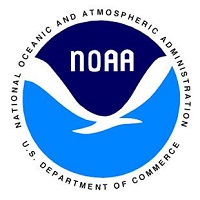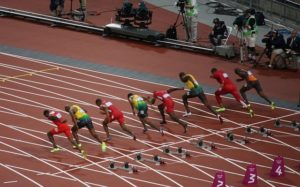When I was a kid, I use to turn the light off in a room and stand as alert as possible in the dark without blinking. Then, I would turn the light switch on and see if I could actually perceive the light moving from the light bulb across the room and filling the room with light.
Spoiler alert: I could not. If the sun were a light bulb, it would take about 8 minutes for light to reach earth if it were off and we turned it on. It takes over 4 years for the light from the next nearest star to earth to reach the earth.
I would imagine a light going on a light year away and it traveling though the darkness and lighting things up along its way. There is no way to see that — it is something someone can only imagine, because to see it, you would have to slow down time a million times. Plus space is empty and you cannot see light traveling through it unless it lights something up like a wall, or a planet, or asteroids or particles of dust.
As fascinated as I was with how fast light moved, I was even more interested in the speed that sound moved, because that was something that I could perceive under certain circumstances. I was astounded to learn that the speed of sound actually changed because of atmospheric conditions and elevation. It is not a constant like the speed of light. If you are trying to break the sound barrier in a plane or a car, the speed you break the sound barrier will be slightly different depending on the atmosphere, the temperature, and the weather.
You may have noticed during a thunderstorm that sometimes there is time between a lightning flash and the sound of thunder. This is because light travels much faster than sound. In fact, if you see lightning and start timing until the thunder, you can estimate the distance the lightning is from you, and whether it is getting closer or moving away. If it is getting closer, the light and sound will be closer together. If it is getting farther away the light and the sound will be spread farther apart in time.
It takes about 5 seconds for sound to travel one mile. Light travels a mile in about 5 microseconds. Microseconds are a millionth of a second which means light travels about a million times faster than sound. If the time between lightning and thunder is around one second, then the lightning is about a fifth of a mile away (352 yards or 3.5 football fields), or less than a quarter of a mile away. If the light and sound are less than a second apart, the lightning is very close. A few times I have been in really bad thunderstorms, and when I realized the light and sound was getting longer and longer apart, I was relieved, because I knew the storm was travelling away from me.
Sonar
When we yell across a canyon, and we hear our echo, the delay between when we yell and our echo returns is the time it takes for our voice to carry to the rock wall on the other side of the canyon and bounce off and travel back. Similarly, in a large empty room we will hear echoes of various delays depending on how big the room is.
Sometimes the echo is less noticeable depending on how reflective the surfaces are and how much the sound bounces around. In fact, in a small bathroom with tile walks you will notice a lot of echo, because the sound is bouncing around multiple times off the walls.
This is also how bats use sonar to navigate through dark caves. They squeak and their voice bounces off the cave wall and they can tell how close they are to the walls by the sound or the delay in the return of the echo. No, bats are not supercomputers or digital tape measurers. They are just tuned into the differences in sound just like you can tell the difference of the sound of a coin dropping on a hard floor a few feet from you, and one that is dropped on the same floor on the other side of the room. Bats just have more sensitive hearing and their brains are more aware of subtle differences in the sound.
Sonar used in submarines, and in underwater research to map the floor of the ocean use the same principle, and radar and ground-penetrating radar uses a similar process except it uses radio waves instead sound to bounce off objects to either detect or map things that we cannot easily see like the bottom of the ocean or if there is something buried or a cave underground.

Sound and Temperature
If you go to weather.gov , there is a calculator that will give you the speed of sound based on temperature. Temperature is the primary factor that affects the speed of sound in the Earth’s atmosphere.
Concerts and the Speed of Sound
In a large auditorium, the distance from the stage to a seat in the very farthest point in the building is probably less than a quarter mile. This means the time it takes for sound to travel from one end to another is going to be less than a second. There will be a fraction of a fraction of a second delay for the sound to travel from one end of the auditorium to the other.
In a very large auditorium or stadium, however, there can be problems. If you have all the speakers up on the stage, the sound would have to be so loud to reach people in the back that it would be too loud for the people close to the stage. This is because sound falls off the farther distance it has to travel.
In order to compensate, musicians put additional speakers in a large auditorium or stadium at various intervals along the sides. This can cause a problem, too, if the venue is large enough, because the signal going through the speaker wire is going at the speed of light. The speakers in the back will sound at the same time the ones at the front, but the sound coming from the front of the house will follow to the back at the speed of sound. It will be fraction of a second later, causing a noticeable delay or echo.
To compensate for this, larger auditoriums and stadiums will put a delay on the speakers that are farther back in the house, so that they are in synch with the sound coming from the speakers on the stage and closer to the front of the house.
Echo Chambers in Music Recording
Musicians, rock groups, and singers often use what are called modulation effects such as reverb, echo, and delay to create depth or texture to a song, but these effects were originally created to emulate the sound of an echo in a large room or auditorium. In fact, in Abbey Road Studios where the Beatles, the Foo Fighters, Miley Cyrus, Queen, the Red Hot Chili Peppers, Kanye West, and many others have recorded music, they have special rooms, called echo chambers, that they sometimes use to create various echo effects using the actual accoustic properties of the room instead of an electronic filter or effect.
If that does not blow your mind, there are manufacturers of electronic and computer generated effects that have gone to a great deal of trouble and effort to emulate the sound of the echo chambers at Abbey Road Studios. I guess art and science really do mimic each other.
—Dean McIntyre, June 5, 2020

